Why you might want to fall asleep with thousands of bees around you
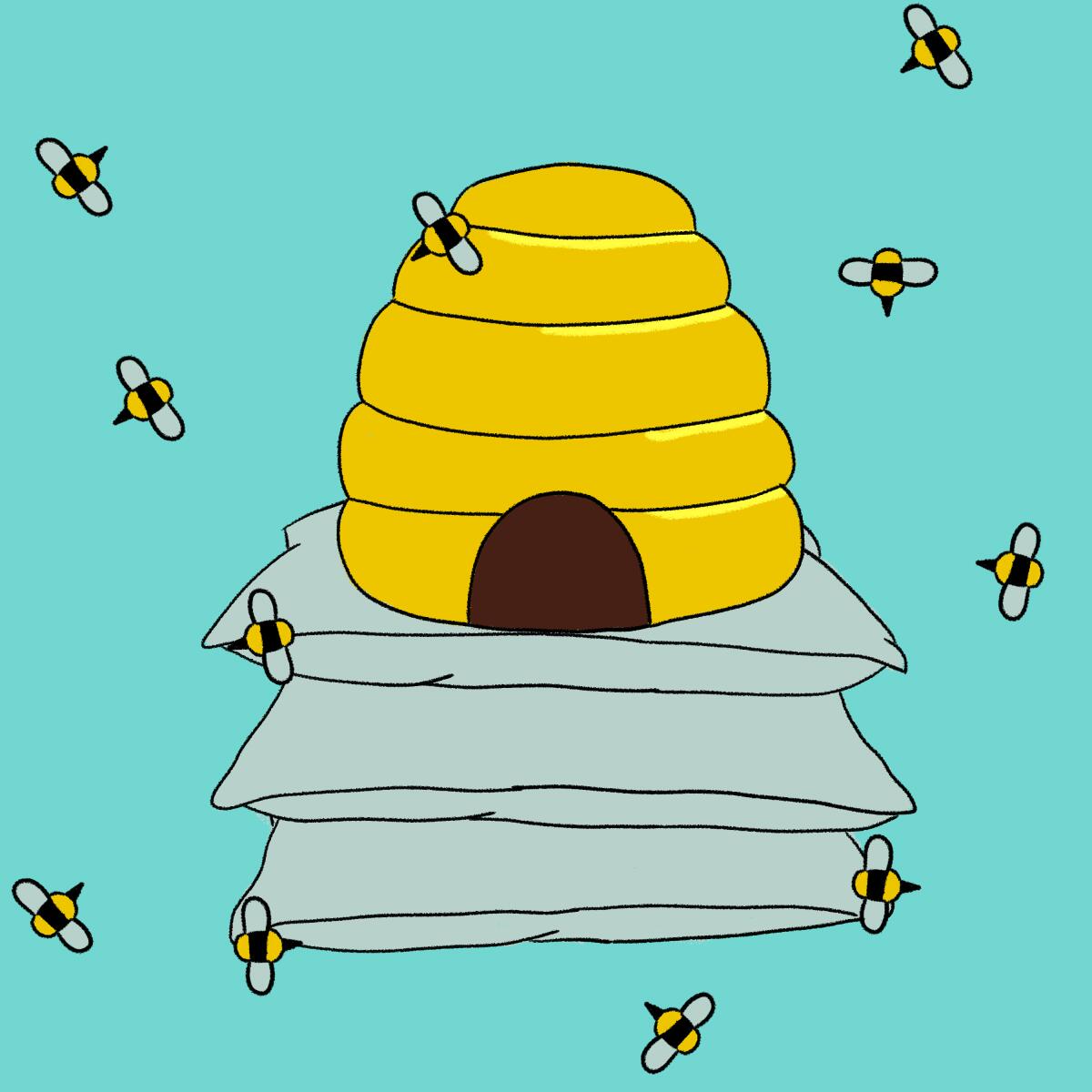
- Share via
By Mary Forgione
Design and illustrations by Micah Fluellen
Sign up here to get The Wild sent weekly to your inbox.
I had never heard about the soothing power of bees until I read how Slovenes are enduring the coronavirus pandemic. Their love of bees is epic and predates the current crisis. Although many of us run from bees, Slovenes relax by “lying down in a room filled with cages of thousands of buzzing bees,” according to this BBC video. The sound apparently works magic on everyone from stressed-out firefighters to restless children. It’s an instant anxiety releaser. In some Slovenian apiaries, or bee houses, you can recline on a bed placed above the bee cages to listen and chill.
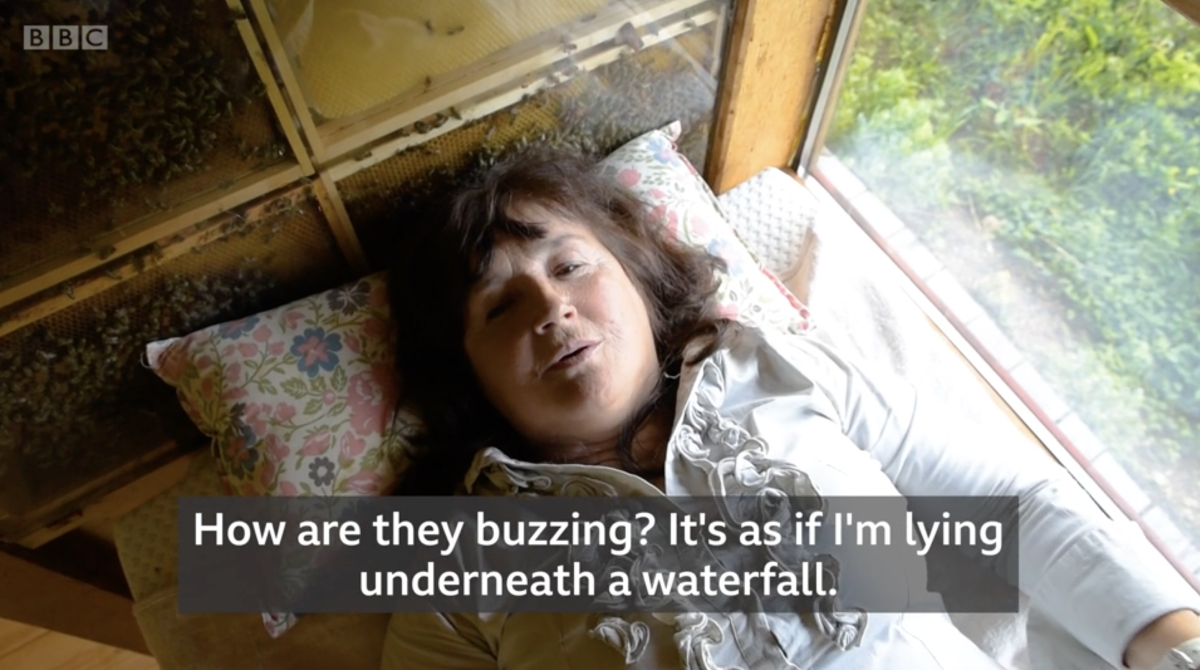
That got me thinking. Maybe it’s not just the buzz that appeals. Maybe it’s the ability to temporarily immerse yourself in the world of another species.
Richard Louv might understand.
The author of “Our Wild Calling” believes we benefit in immeasurable ways by watching and listening to wildlife. In his book, he shares stories from those who said wild encounters helped them feel more grounded — and awed. “They often spoke about the unexpected grace of kinship with untamed animals, about wonder and yearning,” he wrote in a recent L.A. Times opinion essay.
Louv noted too the social loneliness that has been on the rise among younger generations even before COVID-19, which has added another layer of isolation. “Since the pandemic, many of us hunger for a stronger connection to the animals right outside our windows,” he wrote.
Which brings me back to bees. Perhaps, like the Slovenes, we could learn to relax and appreciate one of the smallest members of our all-species family — and tune in to the wonder of it all.
3 things to do this week
1. Set foot on a (pretty much) deserted island. Times staff writer Christopher Reynolds was looking for “day-trip consolation after the pandemic trashed our plans for a road trip up the coast.” He found it on a boat from Oxnard to Anacapa Island, part of Channel Islands National Park, one of the least-visited national parks in the country. Anacapa is a natural for social distancing, unless you’re trying to dodge the thousands of seagulls and hatchlings that call the tiny island home. Here’s his story about what an island visit is like right now.
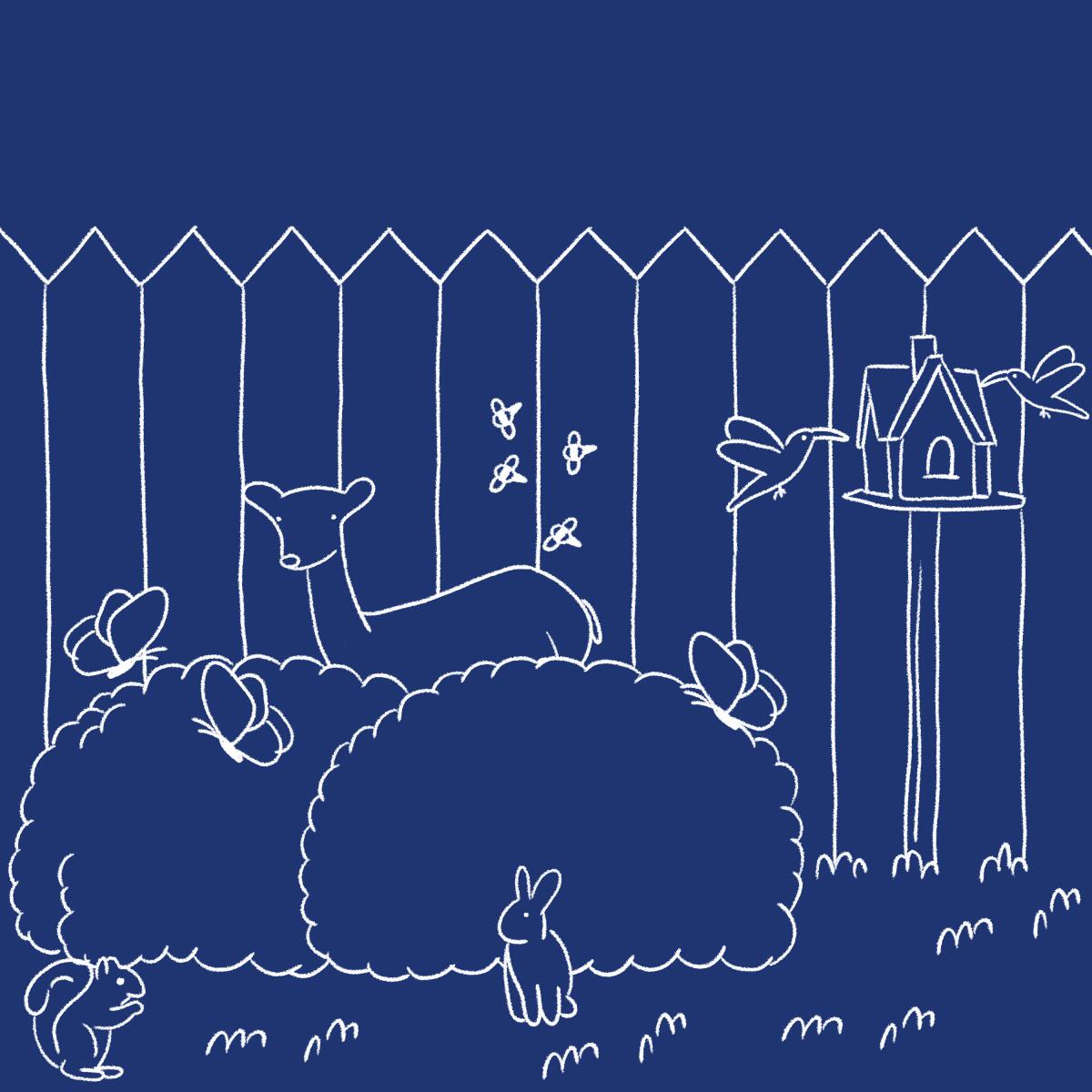
2. Snap a wildlife photo in your backyard. Got native plants? Take photographs of the birds, butterflies, ladybugs and other creatures that appreciate your garden-turned-habitat for the 2020 Garden for Wildlife Photo Contest. Pictures should highlight the connection between native plants and their visitors (including people). Check out last year’s winners here. Entry fees apply, starting at $15 to submit 10 images; the top winner receives $1,000 and their photos featured in National Wildlife magazine. The contest begins Friday and continues through Oct. 17. Find details at nwf.org/Garden-for-Wildlife.

3. Join a virtual discussion about Leave No Trace camping. What you don’t know can hurt you — and the planet. That’s why Leave No Trace practices were created. They’ve been widely adopted by outdoor groups as the best way hikers and backpackers can care for our favorite wild places. Don’t know the seven principles? Pack out all your trash (that means toilet paper too) is a big one. Have questions? The Desert Institute at Joshua Tree National Park will host a free virtual panel with outdoor enthusiasts who will share their wisdom and answer your questions. Tune in for free on Aug. 13 at 4 p.m. at joshuatree.org/live.
The must-read

If you were thinking about snagging a campsite this month in Yosemite National Park, you may want to rethink your plans. Most campgrounds will remain closed at least through Aug. 15. Like other parks, Yosemite closed in March because of the pandemic. It reopened in mid-June but campgrounds — with the exception of half the sites at Upper Pines and the Wawona Horse Camp — never did. However, most back-country areas and access to Half Dome are open, provided you have a permit. When will campgrounds open? Read the full story here.
The red flag
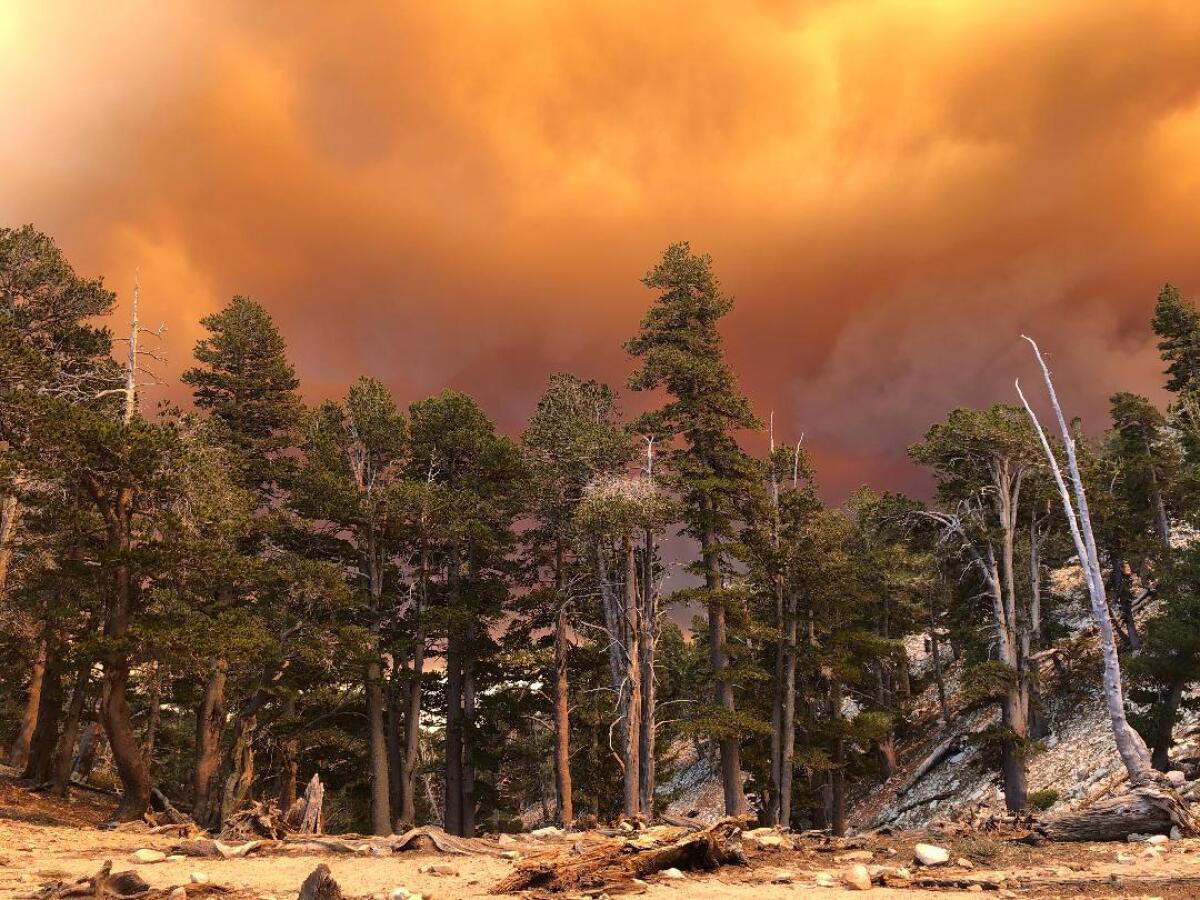
Last weekend I was hiking to the top of Mt. San Gorgonio when I saw a puff of smoke in the distance, south of the 11,503-foot peak. Within an hour, the puff morphed into a dirty brown monster plume, quickly filling the sky. At times, it blotted out the sun. I knew the blaze was miles away, but who knew what would happen next?
My friends and I raced down the mountain in time to see signs that said the entire wilderness was closed because of the Apple fire. Several recent Southern California wildfires have forced evacuations and closed trails in nearby national forests. Here’s what you need to know before you hit the trails this weekend.
What’s closed
Apple fire: Firefighters continue to battle the active blaze, now at more than 26,000 acres. It shut the San Gorgonio Wilderness in the San Bernardino National Forest, which includes popular trails such as South Fork, Momyer Creek, Vivian Creek, Lost Creek, Fish Creek and Big Falls. The closure order will continue until Sept. 1 but could be lifted earlier.
Dam fire: The smaller 220-acre blaze near Crystal Lake in the Angeles National Forest is mostly contained. It temporarily shut Highway 39 north of Azusa, as well as Glendora Ridge and Glendora mountain roads. The road closures also cut off access to trails, such as those from Crystal Lake to Mt. Baden-Powell. Roads are expected to reopen Thursday morning.
Check out the full roundup of what’s closed and what’s open at local beaches, trails and parks.
Insider tip
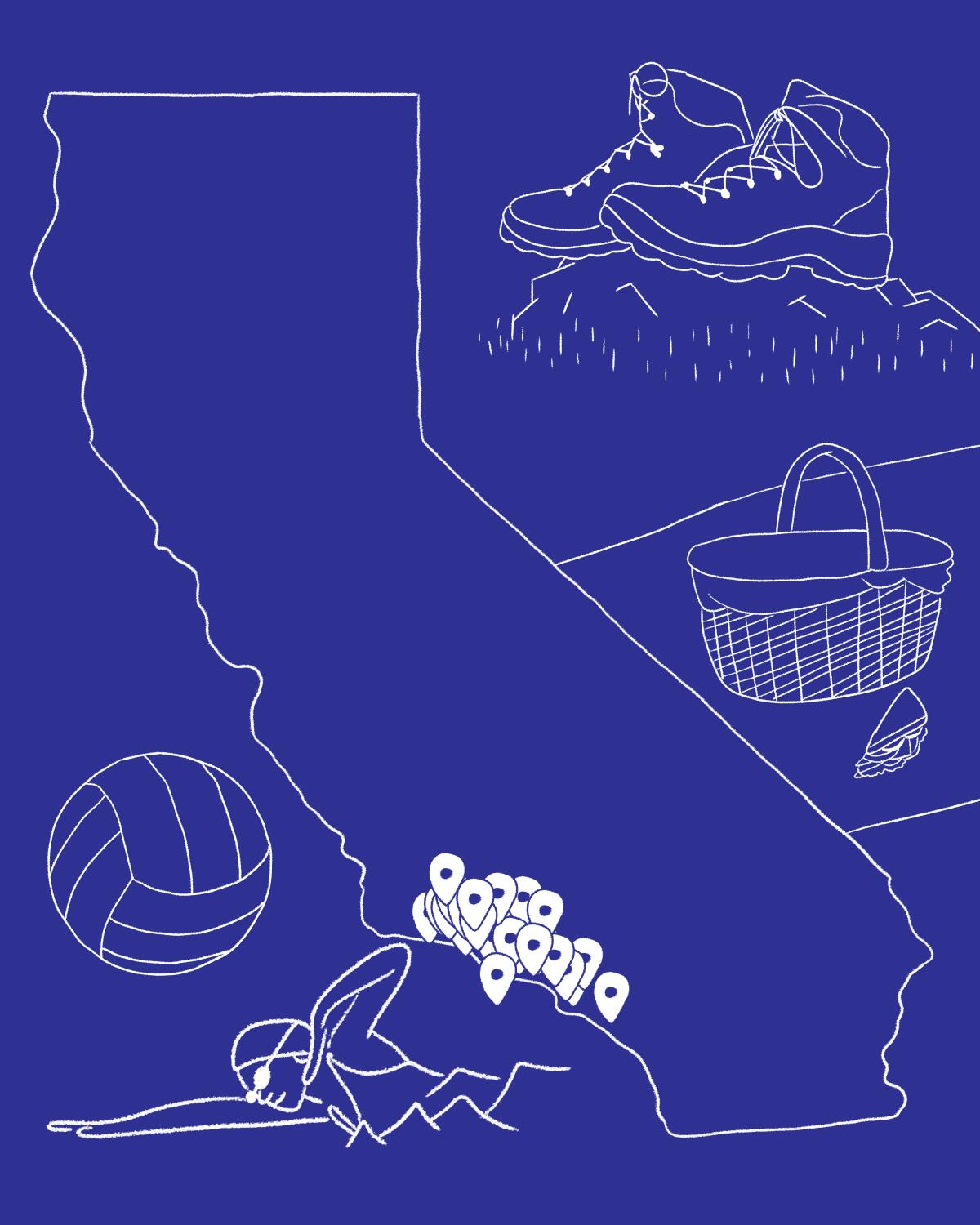
I never knew about Lake Los Carneros Natural Preserve or Camino Corto Open Space until I tapped into the new website 50 Great Public Land Destinations: Santa Barbara and Beyond. It’s a gem, and it’s easy to use. You can filter by destination, distance (from starting point UC Santa Barbara), activity and location. It was created by Deborah Williams, who teaches a public lands class at the university. She realized most of her students, particularly those new to the area, didn’t know much about nearby outdoor spaces. The website provides information and links to places within 300 miles of Santa Barbara, which includes L.A. and Ventura. It’s a good go-to guide when you crave a new place to hike and walk. Go to 50greatpubliclanddestinations.org.
Send us your thoughts
What do you think? Keep the comments coming. Share anything that’s on your mind. The Wild is written for you and delivered to your inbox for free. Drop us a line at TheWild@latimes.com.
Click here to view the web version of this newsletter and share with others. I’m Mary Forgione and I write The Wild. I’ve been exploring trails and open spaces in Southern California for four decades.

Sign up for The Wild
We’ll help you find the best places to hike, bike and run, as well as the perfect silent spots for meditation and yoga.
You may occasionally receive promotional content from the Los Angeles Times.




